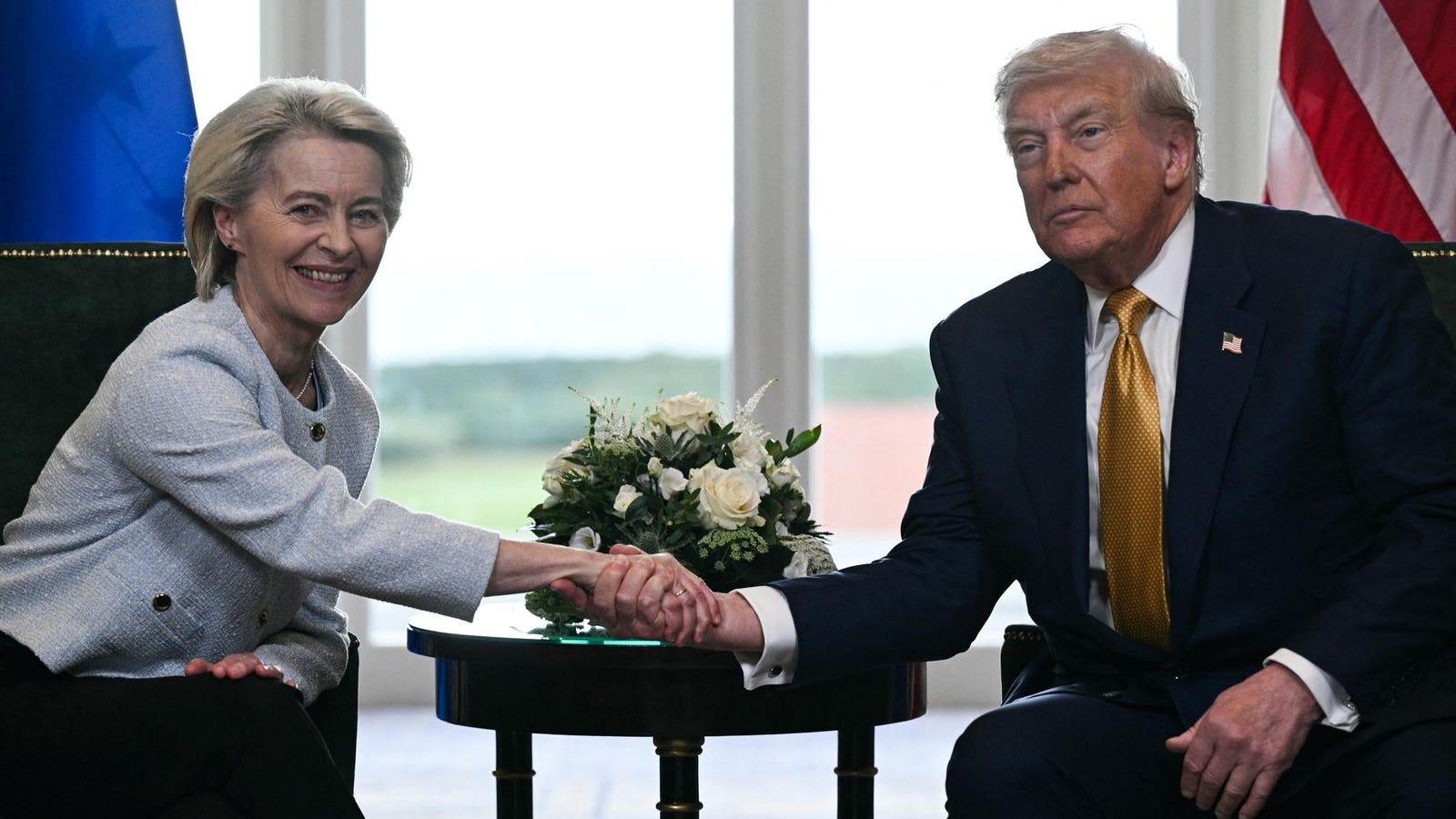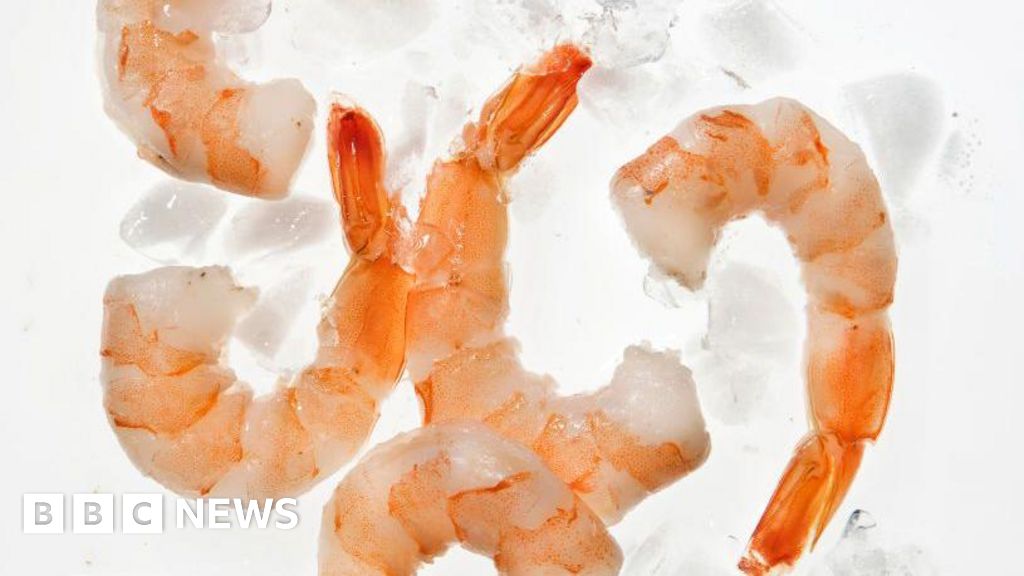Topline
The framework of a trade deal reached between the U.S. and European Union were detailed in a joint statement Thursday, as both sides agreed on lower levies for several goods while the Trump administration imposed conditions before some rates were cut.
A trade deal was reached between the Trump administration and European Union officials last month, just ahead of Trump’s imposed deadline.
AFP via Getty Images
Key Facts
The U.S. agreed to lower a blanket tariff on European imports from 30% to 15%, and the EU agreed to purchasing $750 billion of American energy, a “substantially” increased deal to acquire U.S. military and defense equipment and a further $600 billion investment in the U.S. through 2028, according to a joint statement.
The EU pledged to eliminate tariffs on U.S. industrial goods and provide “preferential market access” to American seafood and agricultural products, including tree nuts, some dairy products, fresh and processed fruits, vegetables and other foods, planting seeds, soybean oil, pork and bison meat.
European Commission President Ursula von der Leyen said in a statement the deal provides “predictability” for European companies and consumers and “strengthens transatlantic relations.”
What European Goods Face Lower Tariffs?
European imports will now face a blanket 15% tariff, while “Most Favored Nation” rates of below 15% will be imposed on aircraft and aircraft parts, generic pharmaceuticals, including their ingredients and “chemical precursors,” and unavailable natural resources, like cork. The U.S. also reiterated a commitment to cap tariffs on semiconductors and lumber at 15%, after President Donald Trump announced earlier this month a 100% tariff on all semiconductor imports. Trump previously threatened 250% tariffs on pharmaceuticals while accusing firms of gouging American consumers with high drug prices, and said after a trade deal was reached with the EU that pharmaceuticals were “unrelated” to agreed terms.
Will European Cars And Car Parts Have Lower Tariffs?
The U.S. will lower 27.5% tariffs on European auto imports to 15% as soon as the EU enacts legislation that would cut several levies on U.S. industrial goods, according to the statement. A senior Trump administration official told reporters the legislation could be enacted within weeks.
What To Watch For
The U.S. and EU plan to “consider” discounted rates on steel, aluminum and derivative products under a quota system, according to the statement. Details about a possible quota system were not specified. Trump, who raised tariffs on steel and aluminum to 50% in June, previously said the levies were a “worldwide thing” that would be “staying the way it is.” Other sectors may be included in future trade talks, including wine, spirits and medical devices, the statement said.
Crucial Quote
Maros Sefcovic, the EU’s trade commissioner, told reporters Thursday the trade deal was “the most favorable” reached between the U.S. and any of its trade partners. “But this is not the end,” Sefcovic said, adding, “This is the beginning. This framework is the first step, one that can grow over time to cover more sectors, improve market access and strengthen our economic ties further.”
Key Background
European and Trump administration officials agreed to a trade deal in late July, just days before a self-imposed deadline by Trump for U.S. trade partners. Trump and von der Leyen said at the time a 15% tariff on European imports would be applied “across the board,” though some sectors—including pharmaceuticals, steel, aluminum and semiconductors—were initially excluded. Trump suggested the trade deal would allow American vehicles and American agriculture to enter the European market, saying European citizens would enjoy “diversification.” Some German and French officials criticized the deal, arguing the framework appealed to Trump’s demands. French Prime Minister Francois Bayrou said it was a “dark day when an alliance of free peoples, united to assert their values and defend their interests, resolves to submissions.” Alice Weidel, head of Germany’s far-right AfD Party, wrote, “The EU has been brutally taken advantage of!” Weidel claimed an agreement for the EU to acquire U.S. military gear and energy is “not an agreement, but a slap in the face for European consumers and producers!”
Further Reading
ForbesU.S. And EU Agree On Trade Deal Setting Tariffs At 15%—Stock Futures RiseBy Zachary FolkForbesTrump Says U.S. Will Charge 100% Tariffs On Imported Chips And SemiconductorsBy Antonio Pequeño IV










